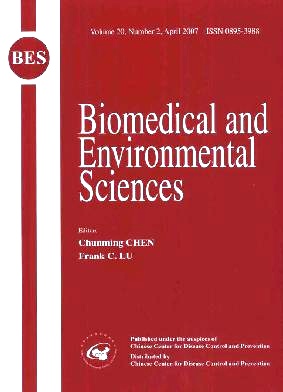Effects of Cadmium on Hepatocellular DNA Damage, Proto-Oncogene Expression and Apoptosis in Rats
-
Key words:
- Cadmium /
- DNA damage /
- Proto-oncogene /
- Apoptosis
Abstract: Objective To study the effects of cadmium on hepatocellular DNA damage, expression of proto-oncogenes c-myc, c-fos,and c-jun as well as apoptosis in rats. Methods Cadmium chloride at the doses of 5, 10, and 20 μmol/kg was given to rats by i.p. and there were 5 male SD rats in each group. Hepatocellular DNA damage was measured by single cell gel electrophoresis (or comet assay), while expression of proto-oncogenes c-myc, c-fos, and c-jun in rat hepatocytes were measured by Northern dot hybridization. C-Myc, c-Fos, and c-Jun were detected with immuno-histochemical method. Hepatocellular apoptosis was determined by TUNEL (TdT-mediated dUTP Nick End Labelling) and flow cytometry. Results At the doses of 5, 10, and 20 μmol/kg, cadmium chloride induced DNA damage in rat hepatocytes and the rates of comet cells were 50.20%,88.40%, and 93.80%, respectively. Results also showed an obvious dose-response relationship between the rates of comet cells and the dose of cadmium chloride (r=0.9172, P<0.01). Cadmium chloride at the doses of 5, 10, and 20 μmol/kg induced expression of proto-oncogenes c-myc, c-fos, and c-jun. The positive brown-yellow signal for c-myc, c-fos, and c-jun was mainly located in the cytoplasm of hepatocytes with immunohistochemical method. TUNEL-positive cells were detected in cadmium-treated rat livers. Apoptotic rates (%) of cadmium-treated liver cells at the doses of 5, 10, and 20 μmol/kg were (17.24±2.98), (20.58±1.35), and (24.06±1.77) respectively, being significantly higher than those in the control. The results also displayed an obvious dose-response relationship between apoptotic rates and the dose of cadmium chloride (r=0.8619, P<0.05).Conclusion Cadmium at 5-20 μmol/kg can induce hepatocellular DNA damage, expression of proto-oncogenes c-myc, c-fos,and c-jun as well as apoptosis in rats.
| Citation: | RIAN YU, LIN-GFEI HE, XUE-MIN CHEN. Effects of Cadmium on Hepatocellular DNA Damage, Proto-Oncogene Expression and Apoptosis in Rats[J]. Biomedical and Environmental Sciences, 2007, 20(2): 146-153. |







 Quick Links
Quick Links
 DownLoad:
DownLoad: